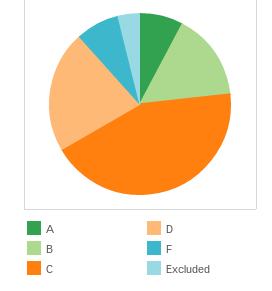Dept. of Education Explanation of Grading System:Criteria:Letter from RSU 23 Superintendent to Parents About Grading:Thornton Academy Report Card 2013 (High School)Thornton Academy Statement on 'School Report Cards' 4/30/2013 At Thornton Academy, we strive to prepare students to meet the challenges of a changing world and create a successful, productive life after high school. Toward that end, we have invested our energy in expanding, deepening, and honing the educational programming we provide so as to meet our students where they are when they come to us. We are confident that we position them for post-graduate success in a 21st century economy. Together with colleagues across Maine, we at Thornton Academy will try to make sense of the school letter grades just released by the Department of Education. None of the scores used to compile the “school report cards” is new. All data have been gathered previously and made available annually on the DOE website. Since schools are in the business of goal-setting and assessing achievement, educators welcome comprehensive measures devised to support us in improving our craft. Unfortunately, by simplifying the complex interplay of factors that influences the overall performance of a school; the “A-F grading system” falls far short of being useful as a tool for improvement. How were these grades calculated? Understanding the formula the DOE used may help to clarify our objections. Performance on standardized tests determines 40% of the grade. Another 40% is determined by school-wide changes over time in those same test scores. For high schools, the graduation rate determines the final 20%. Are test scores really four times more important than earning a diploma? Assigning 80% of the formula to standardized test scores places inordinate emphasis on a three-and-a-half-hour period in a student’s high school experience. Correlation between standardized test scores and success in life is limited. Test scores may drive decision-making in some educational systems, but independent schools like Thornton Academy take a wider view. As a community of educators, we use test scores to inform rather than direct our practice, integrating core skills of reading and math, which standardized tests assess, with more broad-based academics like science, technology, history, foreign language, civics, and the arts, none of which is assessed by the standardized tests used by MDOE in developing our “report card.” Of course we understand—and accept— that test scores provide important information. We just contend that what we can learn from them is insufficient to control an assessment of the school as a whole. It’s fair to ask what, if test scores are insufficient, we consider fair measures of our success. We offer the following: • TA’s graduation rate has moved from 86.83% to 92.51% since 2009, within a demographic that experiences significant levels of poverty. This is significantly higher than the state average and area schools; • 81% of TA students plan post-graduate education (93% including military and employment); • TA offers twenty Advanced Placement course offerings, and the performance of those AP students rival some of the highest AP scores in the country; • TA fosters a global perspective by offering eight foreign languages and sponsoring frequent international field trips, as well as broadening our enrollment to include students from 13 different countries; • We have restructured our curriculum to emphasize the Science, Technology, Engineering, and Math skills that leaders both within the state and across the country agree are essential to the continued health of the United States’ economy; • We have invested significant resources in developing a Student Services Department that includes multiple avenues by which we assist students who struggle (both academically and in the very process of engaging with school) to achieve a level of academic success that allows them to create and pursue viable post-secondary plans; • We are in the process of partnering more closely with local businesses, seeking to build mutual relationships, develop internship opportunities, and foster growth in our students’ job skills; • TA partners with several colleges, leading to an impressive list of high-caliber post-secondary destinations for our graduates; As an academic institution for over 200 years, we share parents’ concern that their children gain the core knowledge and skills that they will need to succeed in life. Our curriculum, program, and teachers are devoted to preparing students for an ever-changing world. We believe our parents agree with that assessment. Thornton Academy Middle School 2013 Report
0 Comments
Leave a Reply. |
Latest UpdatesArchives
June 2024
Categories |

 RSS Feed
RSS Feed
